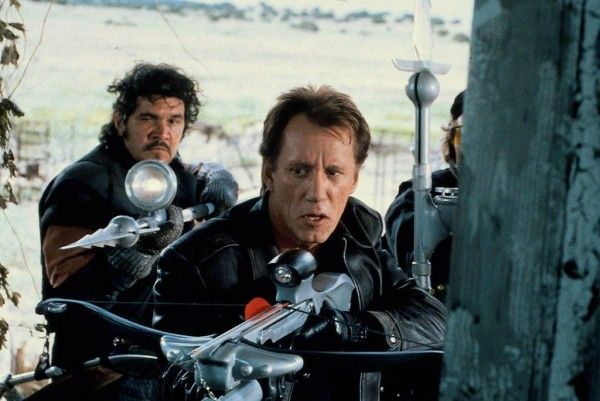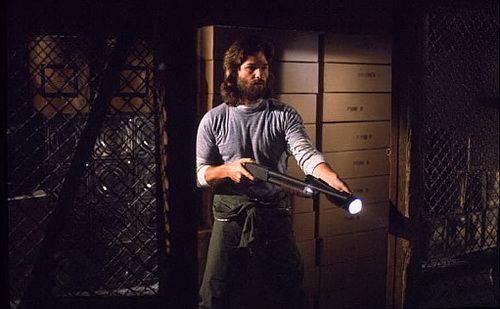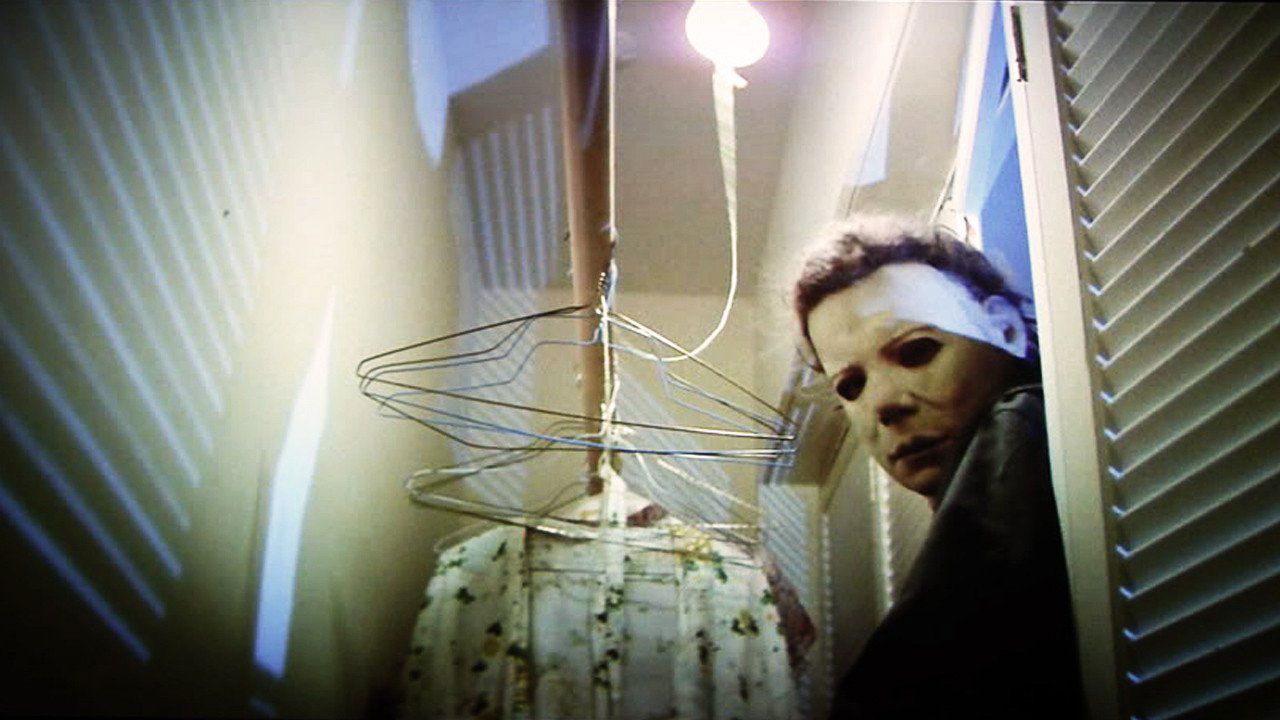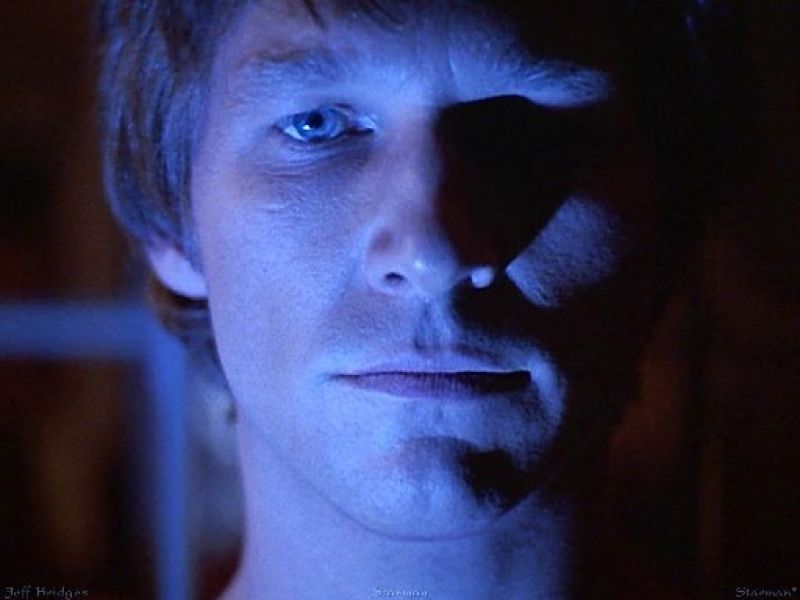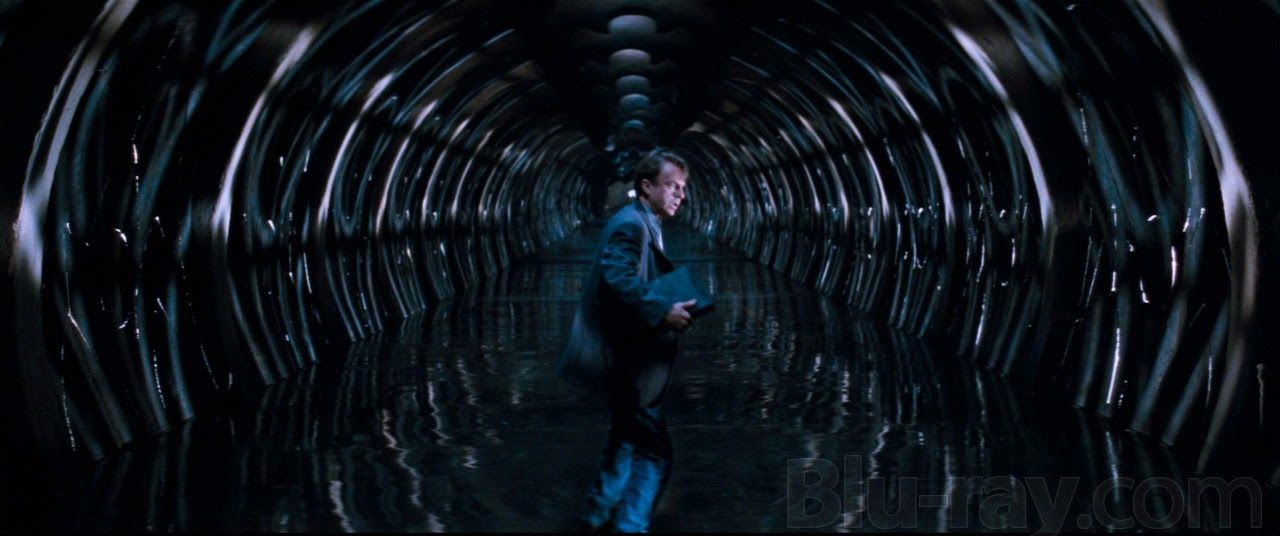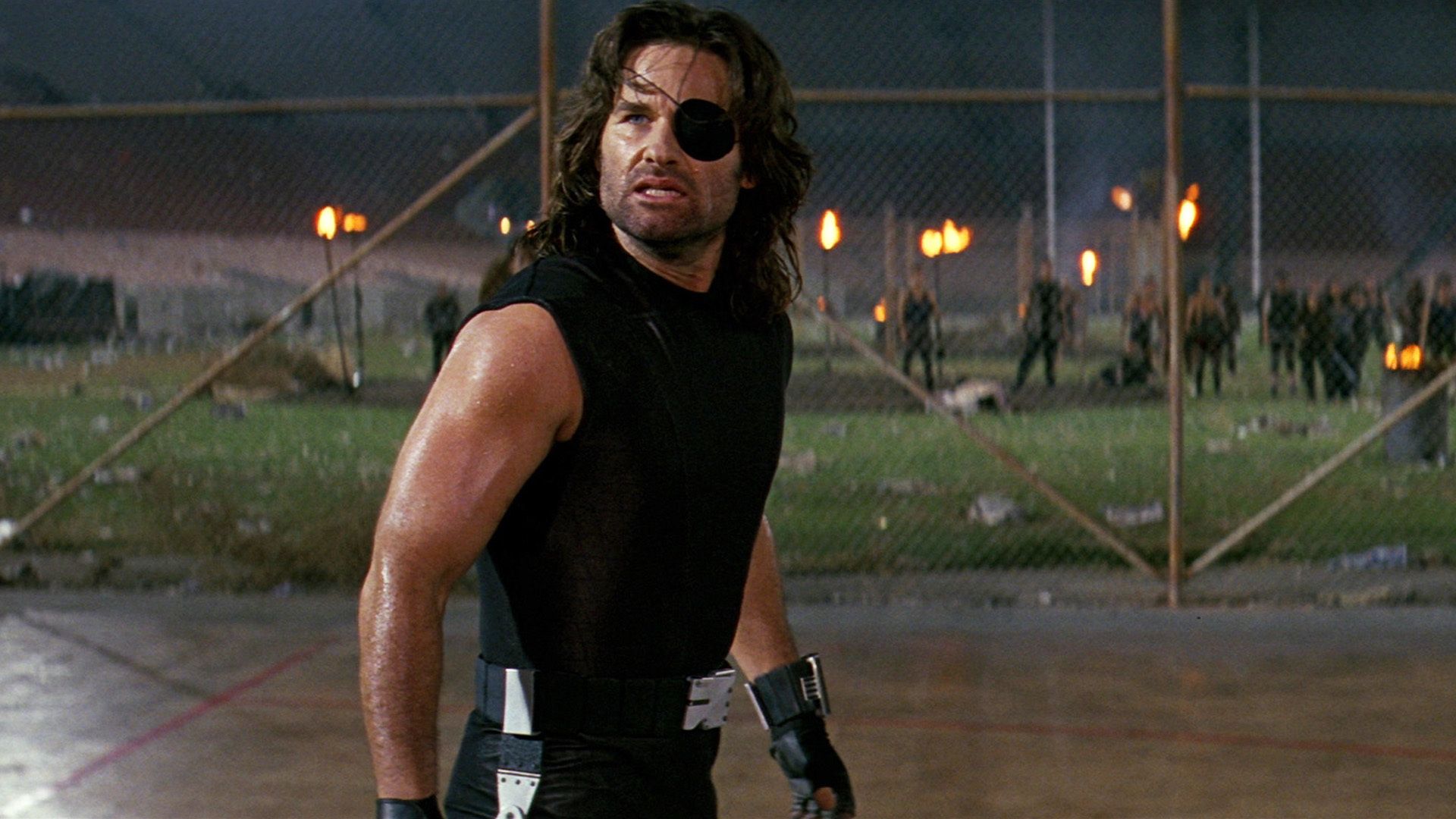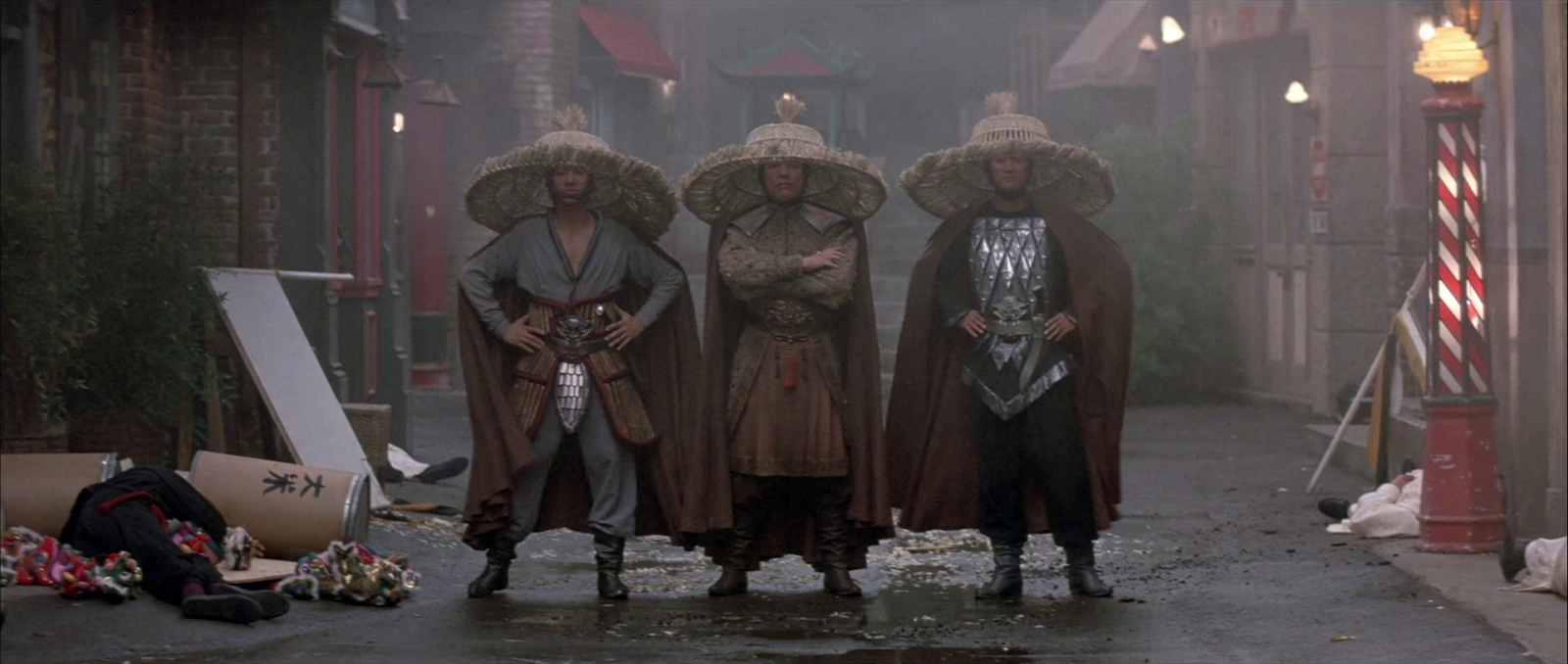John Carpenter has a serious soft spot for assholes. His movies are often centered on truly ridiculous men who are too “charmingly” set in their ways to ever try to correct their sexist or racist flecks of behavior. Kurt Russell’s hero in The Thing tosses a glass of scotch into a tremendously helpful computer because it beats his unpracticed ass at computer chess. His breakout hit, Assault on Prectinct 13, is a harrowing escape thriller about a gang’s heroic attempt to break their leader out of jail. Both Escape from New York and Escape from L.A. tell of the courageous acts of a man who, if you were to be set on fire, wouldn’t even bother to empty his bladder on you out of mercy.
There are plenty of reasons for this, including the provable fact that Carpenter is at least partially as prickly as these men of action. More pointedly, however, these are all men who would never, ever qualify as role models by the public census. Russell’s characters in at least five of Carpenter’s films were marked by a self-regard that was put upfront as to dissuade any ideas of sacrifice or compromise from figures with names like Snake Plisskin. Whether played by Russell or not, the Carpenter man never seeks and often rejects any attempts at easy moralizing, and that seems to strike at the heart of Carpenter’s perspective as an unabashedly political filmmaker.
Carpenter is often in the realm of the supernatural, in a world where uncanny beasts and other things not of this world roam and dominate at will. Chaos, violence, unending, abrasive noise, and impossible problems that require distinct, inventive solutions plague the worlds that Carpenter has created over the years. What the Carpenter heroes have in common is that thoughtfulness, that imaginative edge that allows them to think of a new escape route or an overdue cure. Carpenter identifies with these characters because his own job requires creativity in a similar way, with financial ruin substituting in for mortal ruin (in most cases). Where so many other directors want their reflections to be beloved, handsome, funny models that can be slapped on movie posters nationwide, Carpenter’s films are top-lined by characters of nasty experience and gruff wisdom, a pickled worldview and a basic belief in civilization and society.
For those who have never watched Carpenter’s work, any of the films below is worth checking out, but I’ve got everyone covered here. There are picks here for people just starting, for those who have seen his most famous works, and bonafide fans of the director who might have missed a hidden gem in his extensive filmography. Here are the six films of John Carpenter that anyone interested in his work should see:
Beginners: 'The Thing'
For his first remake, Carpenter didn’t choose just any other B-movie. That wouldn’t be challenging enough. So, he went after Howard Hawks’ beloved The Thing from Another Planet, a tense, invigorating sci-fi thriller, and in the process, he crafted one of the most important works of horror in the history of the genre. Famously dismissed by the high-brows upon its release, The Thing amplified all the fears embedded in Hawks’ narrative and visual bedrock, and Carpenter lent vision to that fear. There is no monster in Hawks’ film, just people taken by the titular, well, thing. Carpenter creates a variety of writhing, wet, ugly, and deeply unsettling creatures that invade the arctic, nomadic station where a group of researchers (played by Kurt Russell, Wilfred Brimley, and Keith David, amongst others), are toiling away. Of course, they don’t all look gross at first, as Carpenter does play off of the same anxious unknowns as Hawks did by having the creatures immediately replicate their victims and assume their identities. In this, Carpenter makes his film about the vast unknown that labors on beneath every face you pass on the street, every friend you drink with, and every date you flirt with. He compounds that with paranoia and claustrophobia, which seemingly reverberate in every frame of the film. This is the subtle terror of Carpenter’s film, but this one happens to bark and bite.
Beginners: 'Halloween'
To get the right amount of scares out of Halloween, you have to be a very specific age. You see it for the first time when you’re older – 17 or older – and more than likely you’ll be too above it to fully buy into the nightmare in total. See it too young, you won’t understand what’s going on. First or second year of high school is the right time, if only because that’s about when you start commanding your own space in the world, when you can go walking out into suburbia with something like authority. It’s only then that you realize how destabilizing a killing spree and a presence like that of Michael Myers can really be to daily life.
Those early moments of him skulking around the neighborhood continue to give me chills, even as the rest of the scares have dulled. It’s that knowledge that suburbia does indeed require its specified rhythms and its routines, and that they can be interrupted so easily, that makes Myers arrival so foreboding. The massacre he enacts is all the more disturbing for coming off as second-hand – a being that kills as if there is nothing particularly wrong with killing. Eventually, we would learn that Myers has a psychological tic in the same vein as Jason, but in this unnerving masterwork, there’s nothing to hold onto for reason, logic, or predictability. It’s a stand-off with the force of violent death itself in an Illinois suburb, and it might be the best horror film ever made.
Advanced: 'Starman'
In a better world, Starman would have garnered a bevy of Oscars for Carpenter and his magnificent, miraculous little movie. As it stands, Jeff Bridges’ wondrously inventive, uniquely sensitive performance was the only part of Carpenter’s film that was recognized by the Academy. And though Carpenter has helmed a number of masterworks at this point, Starman is the only one that has the feel of warmth and legitimacy that is required of 90% of movies that win big awards. Despite this veneer of acceptability, this oddity considers memory and discovery in deeply experienced and human ways that go beyond the typical cinema of moralizing. Karen Allen plays Jenny, a troubled widow who comes in contact with the alien life form not long before it takes the guise of her late husband, Scott. From there, Starman becomes a road movie of sorts, with the same governmental paranoia you found in E.T. and Close Encounters of the Third Kind, and Carpenter proves capable of balancing these elements without ever feeling derivative. Allen and Bridges have exceptional chemistry and even when Carpenter’s framings aren’t electrifying, the way they bounce off one another is often fireworks enough. Starman is a great movie but its biggest power is as an affront to the idea that filmmakers accustomed to the R-rating can’t make a more mild-mannered, original movie with the same artistic oomph.
Advanced: 'Christine'
At the center of John Carpenter’s wild, unsettling tale, the second best film to be adapted from a Stephen King novel, is a young man’s obsession with his first great car. One has to look no further than the success of the Fast & Furious franchise to get a sense of how closely automobiles are intertwined with a certain masculine archetype in America. Where the Vin Diesel-designed line of action films hold up that obsession like a tenant of Biblical belief, Christine rightly envisions this desire to reflect one’s self in cars as a kind of severe sickness. When our nerdy hero (Dressed to Kill breakout Keith Gordon) first finds and rebuilds the titular Plymouth Fury, it gives him a boost of confidence and ego, enough that he picks up the girl of his dreams (Alexandra Paul) over his dreamboat, nice-guy best friend (John Stockwell). Soon enough, however, the relationship turns dark and Christine starts picking off those who taunt her owner. Carpenter ingeniously sees the inevitable tip from confidence to obnoxious ego as a matter of male pride, conjured into daily life by a vintage car that kills. The icy score helps, but this is classic Carpenter, evincing a level of sublime dread and terror that is so convincing, it can make you scared of a sentient car.
Deep Cuts: 'In the Mouth of Madness'
Not unlike the Peter Jackson of The Frighteners and the George Romero of The Dark Half, the John Carpenter that we see in In the Mouth of Madness is a self-reflective artist facing the ugly realities of his chosen profession as a man who makes his money off of the monstrous and nightmarish. Insurance investigator John Trent (Sam Neill) is tasked with hunting down the celebrity author Sutter Cane (Jurgen Prochnow), whose latest novel (which shares its name with the film) has been causing people to grow crazy and homicidal. Instances of brutality and lunacy, such as a police officer beating a homeless man to death, and dreams of horrible monsters begin to plague Trent’s life as he comes close to meeting the mysterious Cane in New Hampshire, and from there, things get increasingly weird. Based off of an H.P. Lovecraft parable, Carpenter seems to be toying as much with the power of authorship as the demanding toils of adaptation in this exhilarating, blood-soaked knot of a film, but he’s also facing the impossibility of remaining impersonal when one writes and reads, or films and watches. Carpenter’s stylistic temperament and political philosophies may be more impactful in works like Christine, Halloween, and They Live, but In the Mouth of Madness falls under a rubric of films that only a rare breed of professional filmmakers are brave and daring enough to make at any point in their career.
Deep Cuts: 'Escape from L.A.'
Where Escape from New York was a precisely cut, stylish science fiction classic – politically subversive, serious-minded in its conception, and vibrantly inventive in its imagery – Escape from L.A. seems more purposefully cheeky and cheap. This isn’t to say that the second mission by Snake Plisskin (Kurt Russell) isn’t encoded with John Carpenter’s particular brand of leftist politics, but it’s delivered in a far more bombastic aesthetic, the dark greys and blues of the first film traded in for yellows, oranges, and reds. This is, in a sense, a reflection of the difference between the two cities but also reflects the mythology of those cities. New York is thought of as a dangerous realm rife with killers, gangs, and violent thieves, whereas Los Angeles is the playground of the blowhards, the covert sadists, the con men, and the self-obsessed. In a sense, this is a commentary on Carpenter’s arrival in the Hollywood system, far away from his early days as cult genre filmmaker that had to do some hard-scrapping to get his meager budgets. In Escape from L.A., pitted against a cruel revolutionary who makes himself up like Che Guevera, Plisskin is a man with a name, a celebrity even, brawling and shooting his way out of an island of West Coast maniacs and derelicts, just trying to get a job done.
Further Watching:
If you’re looking for even more prime Carpenter, there’s three obvious major picks that we’re not including here, namely Escape from New York, Big Trouble in Little China, and They Live. Any of those movies, with their pent-up emotional tensions and vibrant, blunt political ideas, could be subbed in for any of these choices. Beyond that, his first two features, Dark Star and Assault on Precinct 13, are master classes in low-budget genre filmmaking and screenwriting that never skimp on the thrills, whether minor or major. I’m also an unrepentant fan of Carpenter’s last work, The Ward, which may very well end up being his last movie and rightly expresses a feeling of being confused and threatened even as you believe in your own sanity. For a filmmaker who has been working in the industry since the 1970s, the reflective underbelly of the movie has instantaneously recognizable personal worth for the director.


